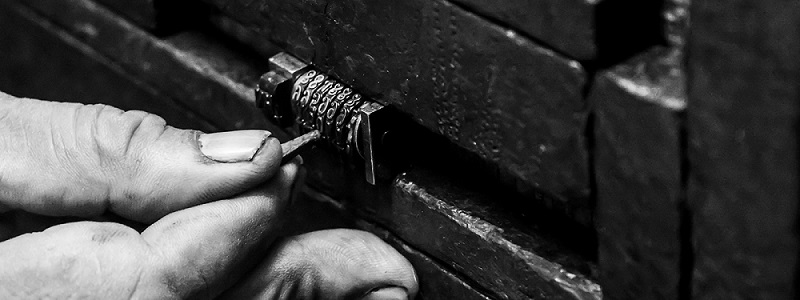A Brief History Of Lock Picking
2023-08-29 08:48

Lock picking, the art of skillfully manipulating locks to gain access without the use of a key, is a practice that dates back centuries. From its humble beginnings to its transformation into a respected craft and even a sport, the history of lock picking is a fascinating journey through human ingenuity and technological advancement.
Ancient Origins:
The roots of lock picking can be traced back to ancient civilizations. The Egyptians, Romans, and Greeks were among the earliest innovators in lock mechanisms. These early locks were relatively simple devices made from wood and metal, relying on basic key shapes to operate. Lock picking during this period often involved crude tools and trial-and-error methods.
Medieval Advancements:
During the Middle Ages, lock designs became more sophisticated. Metalworking techniques improved, leading to more intricate and durable locks. With these advancements came the need for more refined lock-picking techniques. By the 14th century, locksmiths were not only skilled in creating locks but also in understanding their vulnerabilities, a crucial knowledge for both security and lock picking.
The Golden Age of Lock Picking:
The 18th century marked the "Golden Age" of lock picking. As locksmithing grew as a profession, so did the art of lock manipulation. Locksmiths and thieves alike honed their skills, leading to the development of various picking tools and techniques. This era saw the birth of some of the most famous names in lock picking history, including Jeremiah Chubb, who invented the Chubb detector lock, and Joseph Bramah, who created an unpickable lock that remained unopened for decades.
Industrial Revolution and Innovation:
The Industrial Revolution brought significant advancements in lock technology. Mass production allowed for more complex and intricate lock designs, making them more challenging to pick. Locksmiths continued to study locks' inner workings, and lock picking became a respected craft. As locks became central to security systems, the importance of understanding their vulnerabilities grew, both for legitimate purposes and for those with less noble intentions.
Modern Era and Locksport:
The 20th century witnessed the emergence of locksport, a legitimate and organized activity focused on lock picking as a skill and sport. Locksport enthusiasts, often called "locksporters," engage in competitions and challenges to test their lock-picking prowess. Lock manufacturers and security professionals have embraced the community, recognizing that locksport helps identify weaknesses in locks and contributes to improved security designs.
Legal and Ethical Considerations:
While lock picking has evolved from its shady origins, legal and ethical considerations remain. Many countries have laws governing the possession and use of lock-picking tools. Locksport communities emphasize responsible behavior and the importance of obtaining proper training and permission before attempting to pick locks. Ethical lock pickers use their skills for educational purposes, helping people understand the vulnerabilities of various locks and encouraging manufacturers to enhance security.
Technological Advancements:
In recent decades, technology has transformed lock mechanisms. Electronic and digital locks have become increasingly prevalent, raising new challenges for lock pickers. The evolution of smart locks, biometric security systems, and other high-tech solutions has shifted the focus of lock picking to include cybersecurity and electronic manipulation skills.
The history of lock picking tools is a testament to human curiosity, innovation, and adaptability. What began as a necessity to secure valuables has developed into a complex craft, a competitive sport, and a way to improve security systems. Lock picking's journey reflects the ever-changing relationship between security and intrusion, offering insights into the delicate balance between protecting our belongings and understanding the mechanisms that safeguard them.

 Like Us on Facebook to enjoy 5% discount
Like Us on Facebook to enjoy 5% discount